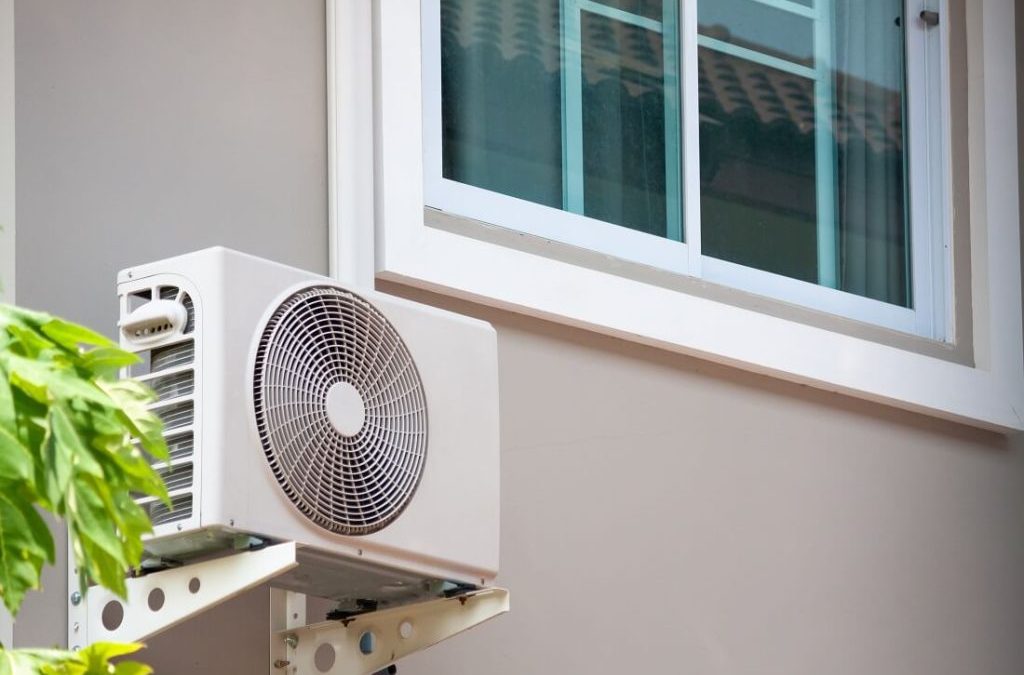A fully functioning HVAC system, however, requires enough ventilation. Home air conditioners frequently have issues due to inadequate airflow, which is why adequate airflow is so important. Some highly crucial parts can be overworked if ventilation is restricted. The air compressor and the condenser are two examples of these.
Clearance is also important for the smooth operation of your system. Your system’s efficiency may suffer if you lack the necessary clearance. This frequently results in insufficient cooling capacity and additional power usage. Keep reading to find out how much space your outdoor unit needs to function properly.
Basic guidelines of clearance:
There needs to be at least 12 inches of clearance on all sides of your outdoor AC unit. Some manufacturers of air conditioners recommend at least two feet (24 inches) of space around the unit. It’s recommended to provide at least 60 inches of clearance above the unit for adequate airflow.
Airflow from one outdoor AC unit can affect the other if they are placed too close together. It is suggested that at least four (4) feet of space be left between two outdoor units. Larger systems might require more room. Before installing an air conditioner, you should contact the manufacturer to find out how much space you’ll need.
Importance of having clearance around ac outdoor unit:
The outdoor condenser and compressor should have no obstructions in order to function at peak efficiency. Air conditioners can be damaged if the system is installed too close to an obstruction, which may worsen during wet weather. This may lead to an earlier than expected decline in your air conditioner’s efficiency. The following are some potential negative effects:
- It’s possible that your home’s air conditioner fails to cool it.
- Keeping your home at a comfortable temperature might put a strain on your air conditioner’s ability to use electricity efficiently, which could lead to higher monthly expenses.
What kind of clearance does ac condenser require?
Air conditioning condensers require at least one foot of horizontal clearance space, but ideally two to three feet. There should be at least five feet of vertical clearance between the unit and any above trees. The appropriate placement of your HVAC system is essential, so use these tips to help you decide where to put it.
-
Shade is better than sun:
If you move your AC condenser out of the direct sunlight, it will function better and consume less energy. Choose a spot that receives as much shade as possible if you can’t find a completely shaded location.
-
Plant the right plants:
The HVAC system can be damaged if falling leaves get inside it. The unit will benefit greatly if the surrounding trees and bushes are evergreens, which retain their needles and leaves throughout the year. Check online or with a local arborist or nursery if you’re unsure, but several species of oak and beech trees also retain their leaves.
-
Add a protective boarder:
The condenser coil may have to work harder if mud splashes make it inside the device. In fact, they’ve been linked to a 30% increase in energy use.
Common obstacles:
Many frequent obstacles can get in the way of air conditioners and must be taken into consideration. The minimum distance your AC unit needs to operate well is also affected by the material that these obstacles are constructed of.
-
Barriers, structures, and obstacles:
Having outside units closer to the house in a more concealed or discreet place is more efficient and aesthetically pleasant, therefore walls and fences are nearly always involved in some manner during an AC unit installation. Wooden fences and walls allow for very little airflow, so much more clearance is required between the two.
Your air conditioner will not be able to draw in enough air or expel enough heat if it is situated too close to a solid wall or other object. With a chain-link fence, however, ventilation is not significantly impeded, thus this is less of an issue. It’s also important to keep the outdoor unit far enough away from your home’s openings so that the exhaust doesn’t seep inside and lower the air quality there.
-
Bushes and landscaping:
Landscaping around your outdoor air conditioner can make it more aesthetically pleasing and boost the value of your home. However, if you have an outside air conditioning unit, landscaping obstacles might reduce airflow and reduce the unit’s efficiency.
Keep at least two feet (24 inches) of space surrounding your outside HVAC unit free of overgrown plants. You can place your AC closer to airy plants, but you should still keep your landscaping well-managed and cut down to prevent overgrowth on your unit.
-
Mechanical obstacles:
If you plan on installing an outdoor AC unit, your HVAC technician will need to account for any mechanical obstacles. Placement of an air conditioner too close to a dryer outlet or a kitchen exhaust vent, for example, can cause the air conditioner to draw in stale air from the kitchen or dryer.
Suggestions for adequate clearance:
If HVAC repairs are ever necessary, be sure to make space available for technicians to work in. Follow these additional guidelines to get the most out of your air conditioner in terms of airflow and energy efficiency over time.
- Keep the outdoor unit clean and clear of debris at regular intervals.
- Clear away any fallen leaves, twigs, or other debris after a storm.
- You should shield your outside AC unit from the sun.
- Trimming trees, bushes, and other adjacent plants can improve air quality.
Remember that keeping some space around your air conditioner will help it work more efficiently and effectively. Maintaining your air conditioner with regular tune-ups before the heat of summer sets in is another good idea.


